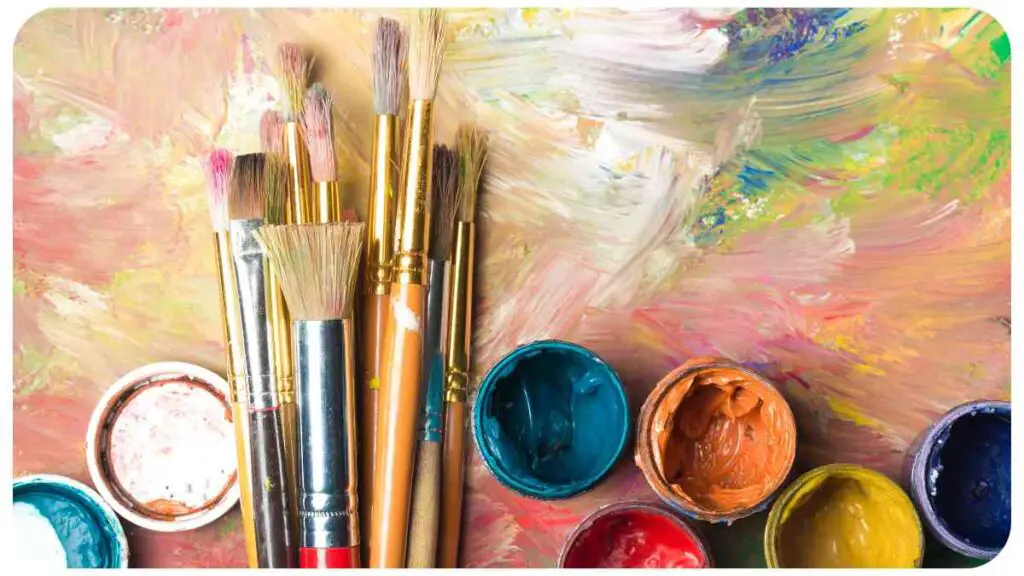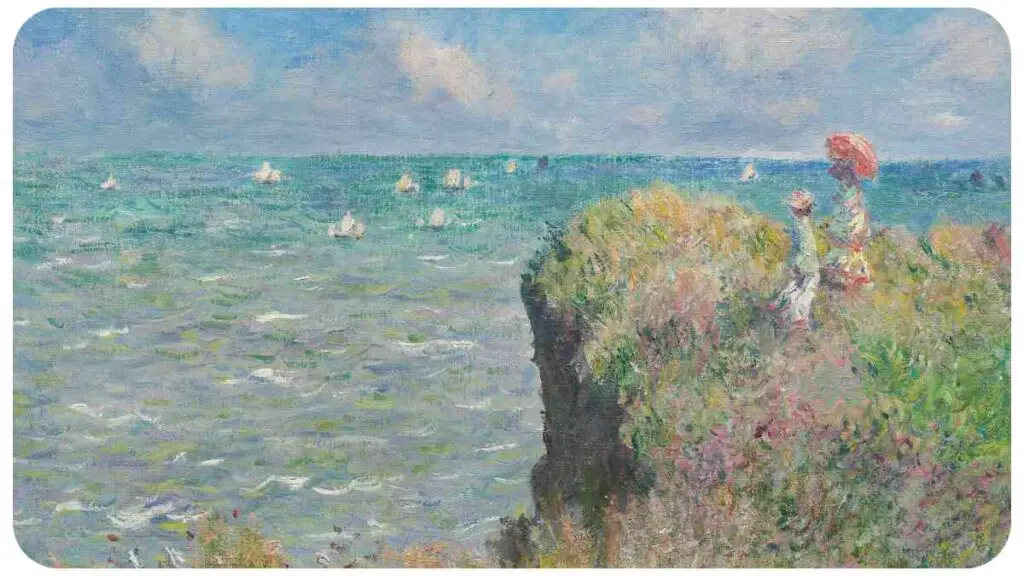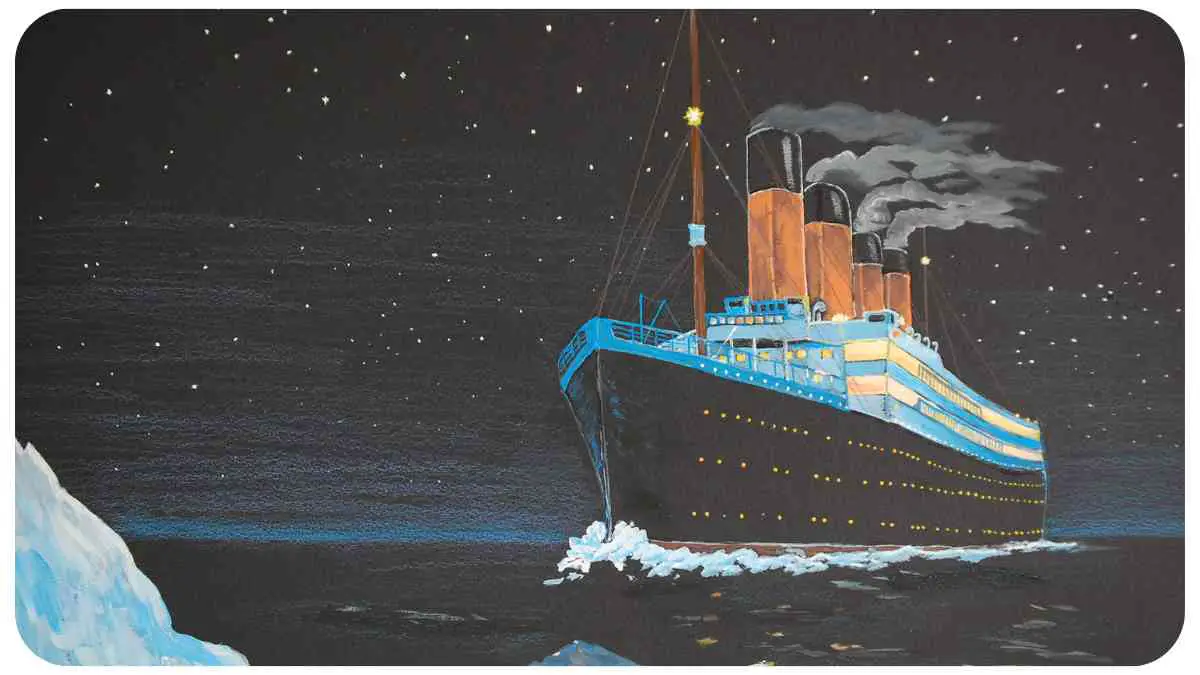Watercolor painting is a captivating art form that captures the viewer’s attention with its vibrant hues and translucent washes. To create stunning watercolor works, it’s essential to understand the properties of watercolor paint and how they affect the outcome of your artwork.
From the composition of the paint to the techniques used, this comprehensive guide will provide you with the knowledge to enhance your watercolor skills and create captivating pieces.
| Takeaways |
|---|
| Understanding watercolor techniques is essential for creating stunning artwork. |
| Experiment with different brush shapes and sizes to achieve various effects in your watercolor paintings. |
| Choose the appropriate watercolor paper that suits your artistic style and preferences. |
| Master the art of color mixing to create harmonious and vibrant palettes. |
| Learn layering techniques to add depth and interest to your watercolor compositions. |
| Explore different watercolor surfaces, such as hot-pressed, cold-pressed, and rough paper, for unique textures and effects. |
| Handle and care for your watercolor paintings properly to ensure their longevity. |
| Choose high-quality watercolor paints that have good lightfastness and a wide range of colors. |
| Troubleshoot common watercolor issues like muddy washes, bleeding, and fading colors. |
| Continuously practice and learn from additional resources to enhance your watercolor skills and achieve stunning results in your artwork. |
2. The Basics of Watercolor Paint
Watercolor paint consists of pigments suspended in a water-soluble medium, typically gum arabic. Understanding various properties of watercolor paint will enable you to select and use colors that meet your artistic goals effectively.
Building comprehensive scrapbooking projects is an art that every beginner should explore. Learn scrapbooking techniques for beginners and unleash your creativity today!
Composition of Watercolor Paint
Watercolor paint is made up of pigments, binders, and additives. High-quality watercolor paints often use single pigments or a limited number of pigments to achieve desired hues with optimal color clarity.
| [Brands] | [Composition] |
| Winsor & Newton | Single pigment, high pigment concentration |
| Sennelier | Single pigment, honey-based binders for increased brilliance |
| M. Graham & Co. | High pigment load, honey-based binders for smooth application |
Water Solubility

Watercolor paint is renowned for its ability to dissolve and create transparent washes. This property allows for layering and blending of colors, leading to unique visual effects. Understanding watercolor’s water solubility is crucial to achieving desired results.
| [Brands] | [Water Solubility] |
| Daniel Smith | Excellent water solubility, vibrant color diffusion |
| Holbein | Highly soluble, even flow of paint |
| Mijello Mission Gold | Great water dispersibility, consistent saturation |
Pigment Concentration
The pigment concentration in watercolor paint plays a vital role in determining color intensity. Artists often prefer paints with higher pigment concentrations as they offer more vibrant and deeper hues, allowing for rich and expressive artworks.
| [Brands] | [Pigment Concentration] |
| Schmincke Horadam | Highest pigment concentration, brilliant color payoff |
| Da Vinci | High pigment concentration, excellent lightfastness |
| QoR Modern Watercolors | High pigment load, intense colors |
Transparency
Transparency is one of the defining characteristics of watercolor paint. Transparent colors allow light to pass through the paint layer, creating luminosity and subtle layering effects. On the other hand, opaque colors cover underlying layers and provide more solid coverage.
| [Brands] | [Transparency] |
| M. Graham & Co. | Transparent to semi-transparent, luminous washes |
| Maimeri Blu | Transparent, vibrant and luminous colors |
| Rembrandt Artist’s Watercolors | Transparent, excellent color clarity |
Lightfastness
Lightfastness refers to a paint’s ability to resist fading when exposed to light over time. Choosing lightfast watercolor pigments ensures the longevity of your artwork, preventing unwanted color shifts and preserving the vibrancy of your painting for years to come.
| [Brands] | [Lightfastness] |
| Holbein Artists’ Watercolor | Excellent lightfastness, archival quality pigments |
| Winsor & Newton Professional Watercolors | High lightfastness, outstanding color stability |
| Daniel Smith | ASTM-rated lightfastness, long-lasting pigments |
Granulation
Some watercolor pigmentation particles tend to settle on the paper, creating a granulated or textured appearance. Understanding the granulation properties of watercolor paints can add depth and visual interest to your artwork.
| [Brands] | [Granulation] |
| Daniel Smith | Wide range of granulating colors, unique texture effects |
| M. Graham & Co. | Granulating effects vary by color, adds visual texture |
| Sennelier | Some colors exhibit granulation, enhancing artistic effects |
3. Handling Watercolor Paint
Mastering the handling of watercolor paint requires the right tools and techniques. Consider the following aspects:
Choosing the right supplies is crucial for a successful scrapbooking project. Dive into our comprehensive guide on choosing the right scrapbooking supplies to get started on your next amazing creation.
Brush Selection
Choosing the appropriate brush for watercolor painting can greatly influence the overall outcome of your artwork. Different brush shapes and sizes offer a range of effects, from large washes to fine details.
| [Brands] | [Brush Selection] |
| Escoda | Handcrafted brushes for precise control and excellent water absorption |
| Da Vinci | Versatile brushes suitable for a wide range of techniques |
| Royal & Langnickel | Affordable brushes suitable for beginners and intermediate artists |
Paper Selection
Watercolor paper is specially designed to handle the unique properties of watercolor paint. It is available in various weights, textures, and sizes. Experimenting with different papers will help you find the one that best suits your artistic style.
| [Brands] | [Paper Selection] |
| Arches | Renowned for its exceptional quality and durability |
| Strathmore | Offers a wide range of affordable watercolor papers for different skill levels |
| Fabriano | Well-regarded for its smooth and heavyweight watercolor papers |
Mixing Colors
Creating a diverse range of colors in watercolor requires proficient color mixing. By understanding the color wheel and the different color theory concepts such as complementary and analogous colors, you can achieve harmonious palettes.
| [Brands] | [Mixing Colors] |
| M. Graham & Co. | Offers a wide range of colors suitable for mixing |
| Winsor & Newton | Provides an extensive color chart for easy color blending |
| Holbein | Known for its vibrant and easily mixable watercolor pigments |
Layering Techniques
Layering is a key technique in watercolor painting, allowing artists to build up colors, create depth, and achieve intricate details. By mastering glazing and wet-on-dry techniques, you can create beautiful and layered compositions.
| [Brands] | [Layering Techniques] |
| Holbein | Known for its smooth layering properties |
| Maimeri Blu | Provides excellent layering capabilities, creating vibrant results |
| QoR Modern Watercolors | Easy to layer and control, ideal for detailed work |
4. Understanding Watercolor Techniques
Certain watercolor techniques can help you achieve specific effects and enhance the visual impact of your artwork. Familiarize yourself with these various techniques to expand your creative possibilities.
Scrapbooking is an art that can be mastered with practice and a few insider tips. Discover the secrets to mastering the art of scrapbooking and take your crafting skills to the next level.
Wet-on-Wet Technique
The wet-on-wet technique involves applying wet paint onto a wet paper surface. This allows colors to blend and diffuse, resulting in soft and atmospheric effects. It’s an excellent technique for creating clouds, sunsets, and watery backgrounds.
Wet-on-Dry Technique
The wet-on-dry technique involves applying wet paint onto a dry paper surface. This technique allows for more controlled and detailed brushwork. It’s useful for creating sharp lines, intricate details, and precise shapes.
Dry Brush Technique
The dry brush technique involves using a brush with minimal moisture, resulting in a rough and textured appearance. This technique is useful for creating foliage, bark textures, and other organic elements that require distinct brush strokes.
Stay up-to-date with the latest trends in the scrapbooking world. Explore our article on the top scrapbooking trends of the year and get inspired to create beautiful and modern scrapbook layouts.
Glazing Technique
The glazing technique involves layering transparent washes over dry layers of paint. This builds up color intensity and creates luminous effects. Glazing is ideal for achieving a deep color range, subtle transitions, and enhancing the overall richness of your artwork.
Lifting and Masking Techniques
Watercolor allows for both lifting and masking techniques. Lifting involves removing or lightening areas of paint by lifting them off the paper with a clean, damp brush or a sponge. Masking involves preserving specific areas by applying a masking fluid or using masking tape before painting.
5. Exploring Watercolor Surfaces
The surface of your artwork can greatly impact the final result and the overall impression of your watercolor painting. Different watercolor surfaces offer unique textures and characteristics, allowing for diverse creative expressions.
Hot Pressed Paper
Hot pressed paper has a smooth surface with minimal texture. It is often favored for highly detailed and precise work, as it provides a clean and controlled painting surface.
Cold Pressed Paper
Cold pressed paper has a medium texture, making it a versatile option for various watercolor techniques. Its slight tooth adds interest to the painting, capturing the pigment’s granulation effects.
Take your scrapbooking to the next level by creating personalized albums and journals. Learn the art of DIY scrapbooking and start preserving your memories in a unique and meaningful way.
Rough Paper
Rough paper has a pronounced texture, which creates a textured and expressive surface for watercolor painting. It is ideal for creating more spontaneous and loose brushwork, as well as capturing the granulation and unique effects of the paint.
Watercolor Boards and Canvas
In addition to traditional watercolor paper, there are also watercolor boards and canvas available. These surfaces offer artists the opportunity to experiment with different textures and create watercolor paintings with a unique look and feel.
| [Brands] | [Watercolor Surfaces] |
| Arches | Offers a variety of watercolor surfaces including hot press, cold press, and rough paper |
| Yupo | Synthetic paper that allows for unique watercolor effects and experimentation |
| Fredrix | Provides watercolor canvas, a surface that resembles traditional canvas with watercolor adaptability |
6. Caring for Watercolor Paintings
To ensure the longevity and preservation of your watercolor artworks, proper care is essential. Consider the following tips for handling and protecting your watercolor paintings.
Proper Drying and Storage
Allow your watercolor paintings to dry completely before storing them to prevent any smudging or damage. Store them in a cool and dry place, protecting them from direct sunlight, extreme temperature changes, and excessive humidity.
Framing and Display
Framing your watercolor paintings not only enhances their presentation but also protects them from dust, pollutants, and physical damage. Choose acid-free mats and UV-resistant glass to safeguard your artwork.
Protection from Light and Humidity
Watercolor paintings are sensitive to light and humidity. To protect them from fading or color changes, display them in areas away from direct sunlight and avoid exposure to high levels of moisture or humidity.
7. Choosing the Right Watercolor Paints
Selecting the right watercolor paints is crucial for achieving the desired effects in your artwork. Consider the following factors when choosing paints for your watercolor palette.
Professional Grade vs. Student Grade
Professional-grade watercolor paints typically have higher pigment concentrations, superior lightfastness, and a wider array of colors.
They offer richer, more vibrant results and are recommended for serious artists. Student-grade paints are more affordable and suitable for beginners or those who want to explore watercolors without a significant investment.
Single Pigment vs. Mixed Pigment
Single pigment colors have a single pigment source and result in cleaner and more vibrant hues. Mixed pigment colors, on the other hand, combine multiple pigments to create specific shades. Consider the color clarity and mixing capabilities required for your artwork when choosing between single pigment and mixed pigment colors.
Trying Different Brands
Experimenting with various watercolor brands allows you to discover the qualities and characteristics that align with your artistic vision. Every brand has its unique formulation, pigment selection, and color range. Take time to explore different options and find the brands that resonate with your style.
Exploring Different Color Palettes
Watercolor offers a vast range of colors to choose from, and creating a well-balanced color palette is essential. Consider warm and cool hues, primary and secondary colors, and complementary shades to create a harmonious and versatile palette that suits your artistic preferences.
8. Troubleshooting Common Watercolor Issues
Watercolor painting comes with its share of challenges. Here are some common issues artists might face and tips for troubleshooting:
Muddy Washes

Muddy washes can occur when colors become overmixed, resulting in a dull and muddy appearance. Avoid excessive layering and overworking the paint. Clean your brush thoroughly before applying new colors and experiment with limited palettes to maintain color clarity.
Bleeding and Blooming
Bleeding and blooming happen when wet paint spreads uncontrollably, creating unwanted results. Use masking techniques, incorporate drying time between layers, and control the amount of water on your brush to prevent excessive bleeding and blooming.
Hard Edges
Hard edges occur when the paint application dries quickly or when colors are not blended smoothly. To achieve softer edges, work wet-on-wet or use a clean, damp brush to soften the edges while the paint is still wet.
Fading Colors
Fading colors can be the result of using low-quality or fugitive pigments, inadequate lightfastness, or exposure to excessive light. Choose paints with high lightfastness ratings and properly protect your artwork from prolonged exposure to direct sunlight.
9. Conclusion
Understanding the properties of watercolor paint is vital for achieving desirable results in your artwork. By grasping the composition, solubility, pigment concentration, transparency, lightfastness, and granulation of watercolor paint, you can make informed choices to enhance your creative process.
Additionally, mastering various watercolor techniques, exploring different surfaces, and caring for your watercolor paintings will further elevate your skills and ensure the longevity of your artwork. With the right knowledge, materials, and practice, you can unlock the captivating potential of watercolor painting and create stunning pieces that showcase your expertise
Further Reading
Here are some additional resources for further exploration and understanding of watercolor painting:
Guide to Understanding Watercolor Paint Properties: This comprehensive guide dives deep into the properties of watercolor paint, including the composition, solubility, and pigments used, providing valuable insights for artists.
Watercolor Paint: An Introduction: This article serves as a beginner’s guide to watercolor paint, offering an overview of the medium, its characteristics, and tips for getting started.
Types of Watercolor Paints: Explore the different types of watercolor paints, including tube, pan, and liquid watercolors, and gain a comprehensive understanding of each type’s unique qualities and applications.
FAQs
What are some basic watercolor techniques for beginners?
- Wet-on-wet technique: This involves applying wet paint onto a wet paper surface, allowing colors to blend and create soft, blended effects.
- Wet-on-dry technique: Applying wet paint onto a dry paper surface, allowing for more controlled and detailed brushwork.
- Dry brush technique: Utilizing a brush with minimal moisture to create rough and textured appearances.
- Glazing technique: Layering transparent washes over dry paint to build up color intensity and create luminous effects.
- Lifting and masking techniques: Removing or preserving specific areas by lifting off paint or applying masking fluid.
How do I choose the right watercolor paints for my artwork?
Consider factors such as the quality (professional-grade vs. student-grade), pigment characteristics (single pigment vs. mixed pigment), and different brands available. Experiment with various brands and colors to find the ones that align with your artistic vision.
How can I prevent my watercolor paintings from fading?
To protect your watercolor paintings from fading, display them away from direct sunlight, avoid exposure to high moisture or humidity, and use paints with high lightfastness ratings. Additionally, consider framing your artwork with UV-resistant glass and using acid-free mats for preservation.
How can I avoid muddy washes in watercolor painting?
To prevent muddy washes, avoid excessive layering and overmixing of colors. Clean your brush thoroughly between color applications, and experiment with limited palettes to maintain color clarity.
How can I achieve softer edges in my watercolor painting?
To achieve softer edges, work wet-on-wet, allowing the paint to blend and create softer transitions. You can also use a clean, damp brush to softly blend and soften edges while the paint is still wet.

Hellen James is the creator of Unified Crafts and has been crafting since she was a kid accompanied by her mom to the craft store, where she was free to choose whatever ignited her imagination.

